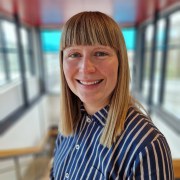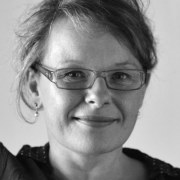Attracting young people: why and how?
An important social mission of any science centre or museum is to get teenagers interested in and fascinated by science. By doing so we hope that they become active citizens who contribute positively to the community, and potentially also choose a career in science. However, something happens when teenagers reach a certain age – the local science centre is no longer considered cool. Instead it is considered a place for “kids” with little relevance for these older teenagers. This means that we lose these young people right before they make some of the key decisions in their life that we would like to influence.
How can we become attractive and relevant for the youth again? Do we have to change the way we develop exhibitions? Or the exhibition format? Or maybe the topics? The climate crisis and the ongoing transition towards a more sustainable society is engaging young people all over the world right now. Could this be the way into their hearts?
Session speakers
When developing new exhibitions at VilVite we spend a lot of time gathering insight from our target audience. What do they already know? What do they need to know more about and why? After conversation with older teenagers, we discovered that to be more relevant for them, we must have focus on science, problems and solutions connected to the climate crisis. Loop, our newest exhibition about sustainability in nature, was developed precisely with this in mind. Our next project is to renew our energy exhibition. Inger will tell a little bit about what we have learned when developing Loop and how we now work to develop an exhibition about sustainable energy solutions and the ongoing energy transition.
To be able to reach our teenagers with climate related content we not only need to be relevant, but we also need to find ways that are engaging for a young audience. In order to find young people who want to engage also outside school we cannot always expect to meet them at Navet, we need to find them where they are; where they meet outside school and in informal activities organized by themselves connected to the school day. We need to make them part of our projects, work for more relevant participation of our young in democratic processes and educate politicians and other adults in office about how they can communicate sustainability with young people for real. Anna will share experiences from collaboration projects and other activities aiming at engaging young people in sustainability; do's and don'ts and ways to go.
Science Museum Group Academy Manager
Young people are our audiences of the future, so we need to value this group as a critical audience and invest in providing for them accordingly. We can hugely benefit from their expertise and innovation, particularly in areas like climate change, technology and future careers as much as they can gain from our knowledge and resources.
Through our ambition to Inspire Futures we are taking a science capital approach to developing new exhibitions especially for young people, understanding their aspirations and how we can best give them a voice in the science that affects their everyday lives.
Development & Experience Design
Museon-Omniversum is a museum where the Sustainable Development Goals of the United Nations are the starting point for our One Planet Programming with films, exhibitions, festivals and programs. This allows us to address global challenges: notably, the climate and biodiversity crisis. We deliberately choose a more activist approach in order to reimagine the traditional role of a museum and reach out to new, younger audiences.
In January 2022 we’ll open the One Planet Festival, a new, experimental format, a combination of exhibition, festival, makerspace and living lab, creating a collaborative museum space. Visitors can get to know and actively participate in innovative, sustainable initiatives in the field of nature, food, clothing, sports and building and living. In the festival programming we collaborate with scientists, designers and start-ups who, together with our (young) visitors, work on their projects.
Museum Educator PhD reseacher





